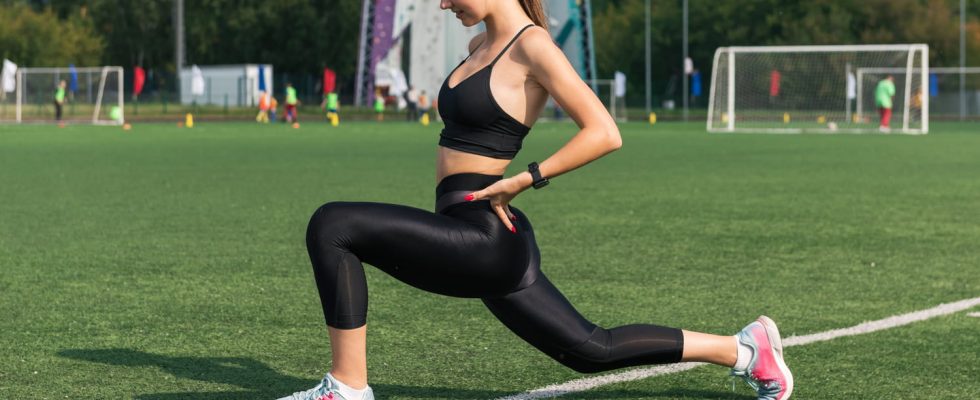The psoas is a very deep muscle that allows the bending and flexion of the hip. What is the point of stretching it and how to do it? What are the risks and precautions to take? The light of Dr Marc Rozenblat, sports doctor.
The psoas is a muscle that connects the lower back to the femur. It is made up of two muscular bodies: the psoas and the iliac, hence the term “psoas-iliac”. The psoas inserts at the level of the twelfth thoracic vertebra and extends from the lumbar vertebrae to the anterior part of the thigh, more precisely at the level of the lesser trochanter of the femur. It will join the iliac muscle that attaches to the iliac wing, that is to say the pelvic bone. They both come together to form the iliopsoas muscle. There are two psoas muscles: one on the right and one on the left. “The iliopsoas is the muscle that flexes the hip. It has two other functions: hip adduction, which involves bringing the knee towards the other knee, and internal rotation, which involves bringing the tip of the foot inwards. The psoas increases the curvature of the thoraco-lumbar spine and is responsible for rotation and lateral tilt. The psoas also participates in postural balance“, specifies Dr. Marc Rozenblat, sports doctor.
What is the benefit of stretching your psoas?
The psoas is particularly stressed in certain sports such as football, rugby, athletics and tennis. Outside of this context, the psoas tends to contract as soon as there is a nearby pathology in order to immobilize an area that is in pain. It can be an intestinal pathology, gynecological disorders or even a thoracic pathology that affects the diaphragm since the psoas is also inserted in the diaphragm muscle. “On a daily basis, we tend adopt positions that tend to shorten the psoas and stiffen it. Stretching it therefore has several advantages: favoring elimination of toxins, limiting tension at the lumbar level and contributing to the mobility of the pelvis. L’stretching of the psoas makes it possible to avoid the lumbar arch and thus, to prevent the onset of chronic back pain. This stretch is also of interest to people who practice a ball sport because it allows them to obtain better power in hip flexion.“, develops the sports doctor.
“To stretch his standing psoas, it is necessary to make a lunge, that is to say to put the hip in hyperextension with one knee in front and the other lower limb behind, the heel lifted. The retroversion of the pelvis increases the efficiency of the exercise. Contrary to the stretching of the serving knight which is done by having one knee on the ground, the lunge here is very light“, indicates the specialist.
Lie on your back and grab your right knee to bring it close to your chest while keeping your left leg straight. Perform several inspirations and expirations before repeating the operation on the other side.
What are the risks and precautions to take?
“The risk if you stretch your psoas badly is toworsen the underlying problem. The golden rule is to stretch painlessly, listening to your body. You should feel a tension in the muscle but it should never be painful“, warns our interlocutor.
Thank you to Dr. Marc Rozenblat, sports doctor, President of the National Union of Sports-Health Doctors and of the French Society of Orthopedic Manual Medicine and Medical Osteopathy.
